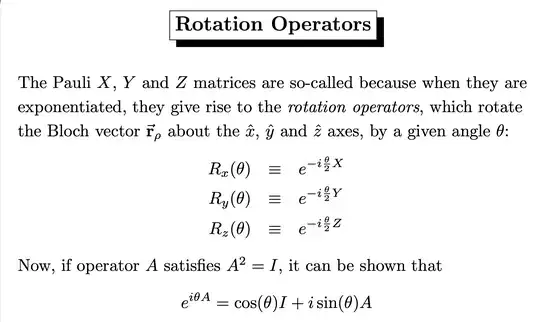Recently I have read a paper in which they have used a unitary transformation as follows:
$$U_{\frac{7\pi}{16}}=\cos\left(\frac{7\pi}{8}\right)\sigma_{z}+\sin\left(\frac{7\pi}{8}\right)\sigma_{x}$$
Here $ \sigma_{x} $ and $\sigma_{z}$ are the Pauli operators. I didn't understand where this came from? Also are any other combinations of sigma operators with any angles is a Unitary rotation? Do anyone know of any general formula for Unitary rotation? Any references would be great. Please see Eq. (3) in the paper: Experimental test of local observer-independence.
Why I am concerned about the above unitary operator is:
 Please see the below definition for the rotation operators. Here there is an imaginary $i$ coming which is not in the paper I have mentioned.
Please see the below definition for the rotation operators. Here there is an imaginary $i$ coming which is not in the paper I have mentioned.